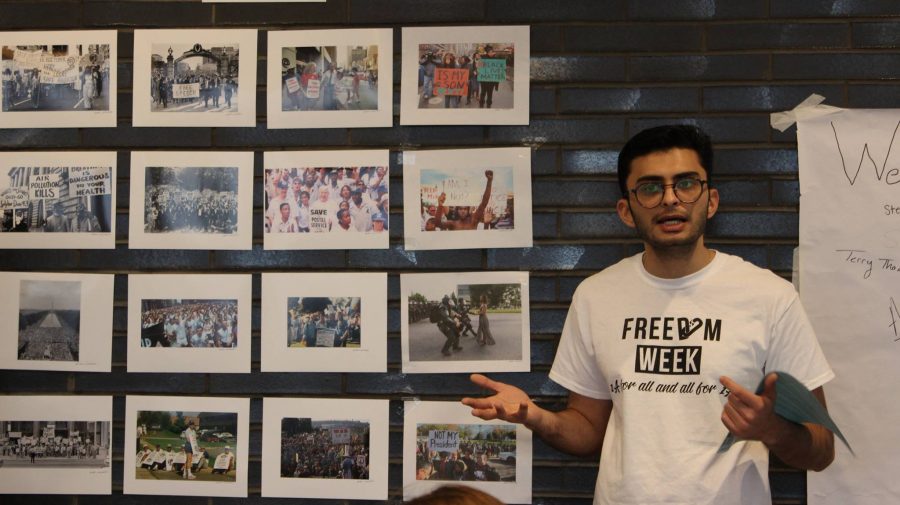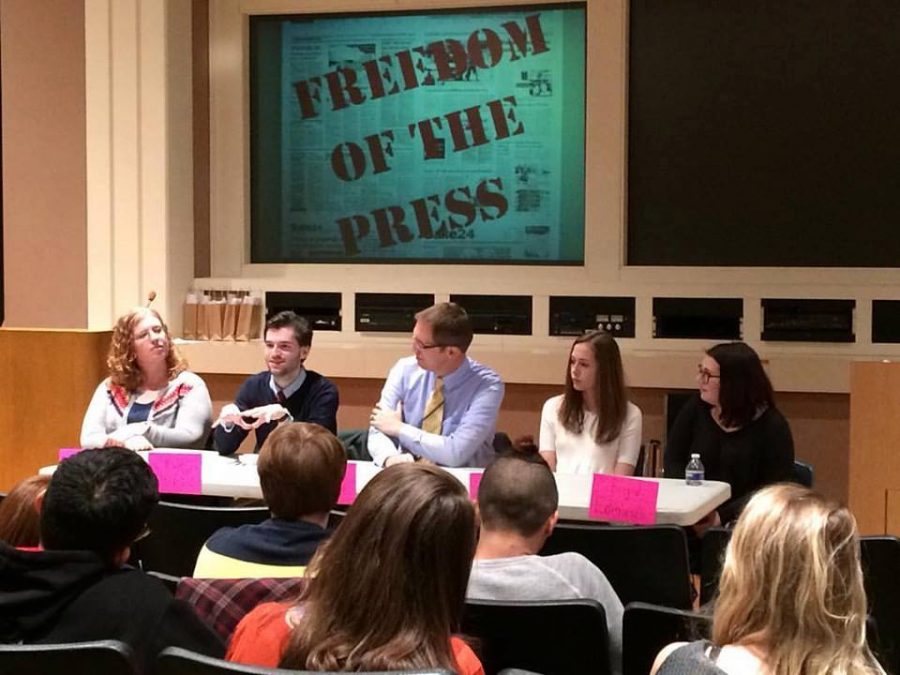Comm Arts students celebrate the First Amendment with Freedom Week
Photo credit/ Rachel Looker
Organizer Ali Sidiki gave a presentation of the First Amendment right of assembly.
December 7, 2016
The students of the Communications Ethics & Law class hosted Freedom Week to educate Marywood students about the First Amendment last week.
According to a flyer for the event, students presented the events of the week under the sponsorship of the Communication Arts department to teach students about the five rights given in the First Amendment.
Some of the events that took place included a Free Speech Wall, a State of Religious Freedom Panel Presentation and a Petition the Powerful Presentation.
Another event, A Visual History of the Right to Assemble, occurred on Wednesday, Dec. 30.
During this event, students Ali Sidiki, Margaret Scott and Terry Thompson hung pictures on the wall in the Learning Commons to show protests from the 1960s to now. These protests included women’s rights, Black Lives Matter, LGBT rights and civil rights.
Junior Digital Media and Broadcast Production Major Terry Thompson said the group aimed to inform others about the rules of public assemblies and how to protest legally with their presentation.
“People think protests are automatically wrong,” said Thompson. “And there are people getting arrested on public property that have the right to assemble.”
One of the final events of Freedom Week, The State of the Press Panel Presentation, took place on Thursday, Dec. 1 at 7 p.m. in the Comerford Theatre. The panel provided a discussion on current issues regarding press freedom.
This event featured student panelists Rachel Looker, a junior digital media and broadcast production major and editor-in-chief of The Wood Word and Kyle Clouse, a senior digital media and broadcast production major and the co-station manager of TV-Marywood.
The panel also included local journalists Jon Meyer, co-anchor and reporter for WNEP-TV, Brigid Edmunds, a digital content creator for The Times Leader, and Sarah Hofius Hall, an education reporter for the Scranton Times-Tribune.
Some of the topics covered in the panel were the meaning of freedom of the press, perceptions of the media, the sensationalizing of news and how to use the freedom of press to inform the public.
The event ended with an open question and answer session for the audience members. During this time, audience members asked questions such as how to avoid bias as a reporter and how to stand out as a media source.
After the panel, Hall mentioned how important it is to talk about press freedom during this time, with “public perception of the media as low as it is.”
She added that due to the mistrust of the media, it is important for journalists to show the public the good that they do.
Hall also said that she hoped students would leave the event with an understanding of the importance of their rights.
“I hope they realize how important the First Amendment is and how vital it is for democracy,” said Hall.
Katie Haczewski contributed to this article.
Contact the writer: [email protected]






